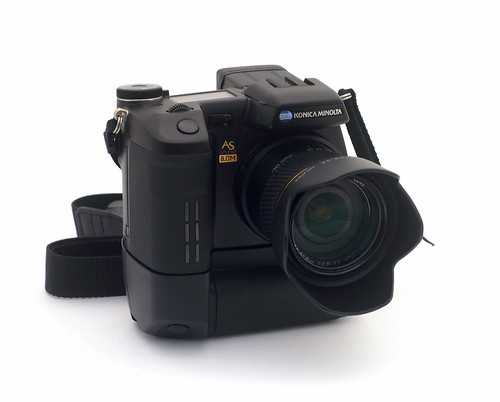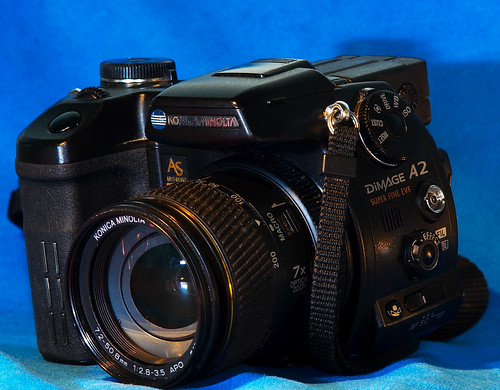Difference between revisions of "Konica Minolta Dimage A2"
m |
Hanskerensky (talk | contribs) m (Now Category: D|Dimage A2 Konica Minolta) |
||
| Line 57: | Line 57: | ||
[[Category: K]] | [[Category: K]] | ||
[[Category: M|Minolta Dimage A2]] | [[Category: M|Minolta Dimage A2]] | ||
| − | [[Category: D|Dimage A2]] | + | [[Category: D|Dimage A2 Konica Minolta]] |
[[Category: Bridge camera]] | [[Category: Bridge camera]] | ||
[[Category:TIPA]] | [[Category:TIPA]] | ||
Revision as of 06:23, 9 April 2022

|
| DiMage A2 image by Steve Harwood (Image rights) |
An eight megapixel, fixed-zoom-lens digicam, successor of the Minolta DiMAGE A1.
Excellent manual controls, with buttons for just about everything. A manual focus ring and a manual zoom ring make for an excellent camera
Features
- 8MP resolution
- Optical zoom of 7X --- 28-200mm.
- Macro at 28mm and 200mm.
- It has a tilting LCD 1.8", tilts 90 degrees up, 10 degrees down.
- Electronic viewfinder (almost 1 megapixel) tilts 90 degrees up.
- Can automatically or manually switch between two types of view
- Flash hot shoe
- Pop-up flash
- Multi-channel wireless TTL flash
- Wireless flash triggered by pop-up or hotshoe-mounted flash
- Manual zoom and focus rings
- Automatic focus switches to monochrome in low light for increased
focus range (due to higher contrast of monochrome versus color)
- Optional spot focus point can be set for any point on CCD
- Area, center-weighted and spot exposure (spot can be selected as
for focus
- Uses compact flash cards to at least 4GB
- JPEG, SuperFine JPEG, TIFF, RAW
- Lithium-ion battery pack
- Optional battery grip (shown) houses 1 or 2 battery packs and adds
vertical shooting shutter release

|
| DiMage A2 image by Kimmo Kulovesi (Image rights) |
- Selectable LCD view --- exposure effect or "open aperture" perfect
for long exposures in dark conditions (or small aperture shots)
- APO lens --- often reviewed as "tack sharp", "excellent"
- Tripod socket centered on lens
- CCD-based vibration reduction
This camera is a real breakthrough as it combines just about every desirable feature in a non-SLR camera. Many of the features are just now being introduced on SLRs, and in half-baked fashion.